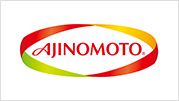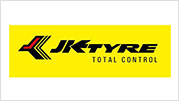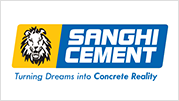NSIC and MSME Certified
ISO 9001:2015 Certified
Manufacturer & Exporter
+91 9824098783
frequently asked Questions
Q1. What is humidity?
Atmospheric air is a mixture of various gases and water vapour. Invisible water vapour is called moisture. Humidity, in simplest terms, is the atmospheric moisture. Because of the presence of humidity, air may feel sticky like during monsoon. Due to low humidity, air may feel dry like during winter.
Q2. What is relative humidity (RH)?
For every temperature, there is a maximum amount of moisture which unit volume of air can hold. Let us assume, at a particular temperature, the air is theoretically said to hold a maximum of 5 grams of moisture per unit volume.
If, at a particular time, that air actually holds 5 grams of moisture per unit volume, we can say that the volume of air is saturated ie: it can’t hold any more moisture. This implies the relative humidity is currently 100%. I.e.: (5g/5g) x 100 = 100.
If at the same temperature, the same air holds 2.5 grams of moisture per unit volume, we can say that the relative humidity at that time is 50%. I.e.: (2.5g/5g) x 100 = 50.
Thus, relative humidity can be defined as “the amount of water vapour present in air expressed as a percentage of the amount needed for saturation at the same temperature.” Relative humidity, or ‘humidity’ as it is loosely-called, is expressed in percentage (%) terms. As the relative humidity approaches 100%, the air can hold lesser amounts of moisture.
For every temperature, there is a maximum amount of moisture which unit volume of air can hold. Let us assume, at a particular temperature, the air is theoretically said to hold a maximum of 5 grams of moisture per unit volume.
If, at a particular time, that air actually holds 5 grams of moisture per unit volume, we can say that the volume of air is saturated ie: it can’t hold any more moisture. This implies the relative humidity is currently 100%. I.e.: (5g/5g) x 100 = 100.
If at the same temperature, the same air holds 2.5 grams of moisture per unit volume, we can say that the relative humidity at that time is 50%. I.e.: (2.5g/5g) x 100 = 50.
Thus, relative humidity can be defined as “the amount of water vapour present in air expressed as a percentage of the amount needed for saturation at the same temperature.” Relative humidity, or ‘humidity’ as it is loosely-called, is expressed in percentage (%) terms. As the relative humidity approaches 100%, the air can hold lesser amounts of moisture.
Q3. How does extremely high humidity affect industry?
High humidity is a constant threat to production efficiency, product quality and human health. It can cause many problems including, but not limited to:
- spoiling expensive equipment/devices
- reduction in quality of raw materials
- corrosion of metals
- reduction in shelf life of finished goods
- growth of harmful micro-organisms
Q4. How does extremely low humidity affect industry?
Low humidity causes air to become dry. This leads to many problems including, but not limited to:
- static electricity
- excessive drying of raw materials or finished products
- spoiling of valuable products
- skin-related and nasal problems for humans
Low humidity causes air to become dry. This leads to many problems including, but not limited to:
- static electricity
- excessive drying of raw materials or finished products
- spoiling of valuable products
- skin-related and nasal problems for humans
Q5. How do SUJAY Dehumidifiers work?
SUJAY Portable Dehumidifiers are based on refrigerant technology, similar to the working principle of refrigerators and air conditioners. Room air having high humidity is sucked into the dehumidifier and passed over a set of cooling coils. As a result, moisture in the air condenses on the cold coils and drips into a holding tank. The cooled air is then passed over a warm set of coils and thrown back into the room at just a little over room temperature. This air churning process continues until the entire volume of room air is brought to the set humidity level. Then the compressor cuts off. When the room humidity increases above the set humidity level, the compressor comes on again and the dehumidification process resumes as described above. The cycle continues to maintain RH at a constant level.
Q6. How do SUJAY Humidifiers work?
SUJAY Humidifiers turn water into fine mist (average particle size of 5 microns) using mist maker modules operating on the latest ultrasonic technology. Humidification using ultrasonic technology is safer and economical than using heating/steam.
When the mist maker modules are submerged in water and discs on them vibrate at an ultrasonic (extremely high) frequency, thousands of micron-sized bubbles are created inside water. In technical terms, this phenomenon is known as cavitation. The bubbles rise through and burst at the surface of the water, creating very minute water particles. By means of a blower/fan, these fine particles are blown out of the humidifier as mist
SUJAY Ultrasonic Humidifiers come with Relative Humidity (RH) sensor and controller. As soon as the sensor senses that the set RH level has been achieved in the room, the mist making process pauses. The mist making process resumes when the room humidity falls below the set RH level. The cycle continues to maintain RH at a constant level.
SUJAY Humidifiers turn water into fine mist (average particle size of 5 microns) using mist maker modules operating on the latest ultrasonic technology. Humidification using ultrasonic technology is safer and economical than using heating/steam.
When the mist maker modules are submerged in water and discs on them vibrate at an ultrasonic (extremely high) frequency, thousands of micron-sized bubbles are created inside water. In technical terms, this phenomenon is known as cavitation. The bubbles rise through and burst at the surface of the water, creating very minute water particles. By means of a blower/fan, these fine particles are blown out of the humidifier as mist
SUJAY Ultrasonic Humidifiers come with Relative Humidity (RH) sensor and controller. As soon as the sensor senses that the set RH level has been achieved in the room, the mist making process pauses. The mist making process resumes when the room humidity falls below the set RH level. The cycle continues to maintain RH at a constant level.
Q7. Is there any quick thumb rule applicable to select a dehumidifier or humidifier for a room?
The selection of a dehumidifier, or humidifier in a particular area depends on the following factors:
- Temperature of the room
- Volume of the room
- Current absolute humidity (outside)
- Required room humidity
- Sizes of conveyor, door or window openings (if they are going to remain open)
- Fresh air quantity (if any)
- Number of people in the room and their activity level
You may consult SUJAY Inc.® to get the best solution depending on your application.
The selection of a dehumidifier, or humidifier in a particular area depends on the following factors:
- Temperature of the room
- Volume of the room
- Current absolute humidity (outside)
- Required room humidity
- Sizes of conveyor, door or window openings (if they are going to remain open)
- Fresh air quantity (if any)
- Number of people in the room and their activity level
You may consult SUJAY Inc.® to get the best solution depending on your application.
Q8. What are the limitations in reducing RH with central air-conditioning plants/window air conditioners?
The primary function of an air conditioning system is to reduce the temperature in the air. In the process of doing so, it reduces the relative humidity to a certain extent. However, in tropical areas like India, average air conditioning system can reduce humidity only by 15%-20% from the original level. For example, it may bring down room humidity from 80% to 60% but not lower.
However, dehumidifier is a device specialized for reducing room humidity. Once the dehumidifier capacity (measured in litres of moisture extracted per day) is selected correctly, it can help reduce relative humidity from 80% to as low as 35%* that too at only a fraction of the electricity cost compared to an air conditioning system. This makes the dehumidifier a more economically viable option.
The primary function of an air conditioning system is to reduce the temperature in the air. In the process of doing so, it reduces the relative humidity to a certain extent. However, in tropical areas like India, average air conditioning system can reduce humidity only by 15%-20% from the original level. For example, it may bring down room humidity from 80% to 60% but not lower.
However, dehumidifier is a device specialized for reducing room humidity. Once the dehumidifier capacity (measured in litres of moisture extracted per day) is selected correctly, it can help reduce relative humidity from 80% to as low as 35%* that too at only a fraction of the electricity cost compared to an air conditioning system. This makes the dehumidifier a more economically viable option.
Q9. How do I know what RH level to set?
For human comfort, the ideal RH level is between 45% and 55%.
In case of industrial/commercial use, required RH levels vary as per the application. You may research online or consult SUJAY Inc.’s technical experts to get the best solution for your application.
We also recommend you to buy SUJAY Thermohygrometer STH-2 to determine the actual RH level in the room where you wish to reduce humidity. Then, with a bit of study and experimentation, you can assess the actual and required RH levels.
For human comfort, the ideal RH level is between 45% and 55%.
In case of industrial/commercial use, required RH levels vary as per the application. You may research online or consult SUJAY Inc.’s technical experts to get the best solution for your application.
We also recommend you to buy SUJAY Thermohygrometer STH-2 to determine the actual RH level in the room where you wish to reduce humidity. Then, with a bit of study and experimentation, you can assess the actual and required RH levels.
Q10. Why is the dehumidifier or humidifier not being able to achieve the required humidity?
The selection of a humidifer or dehumidifier to help you achieve the right humidity, depends on multiple factors including room size, room temperature, capacity of the airconditioning or AHU, air tightness of room, number of people working inside, etc.
It is essential to provide the supplier of SUJAY Humidifier/SUJAY Dehumidifier with the required details as above to assist you in making the right choice. In case of undersized model selection, the desired result may not be achieved - as the product which works fine under some conditions may not give the result in other conditions.































